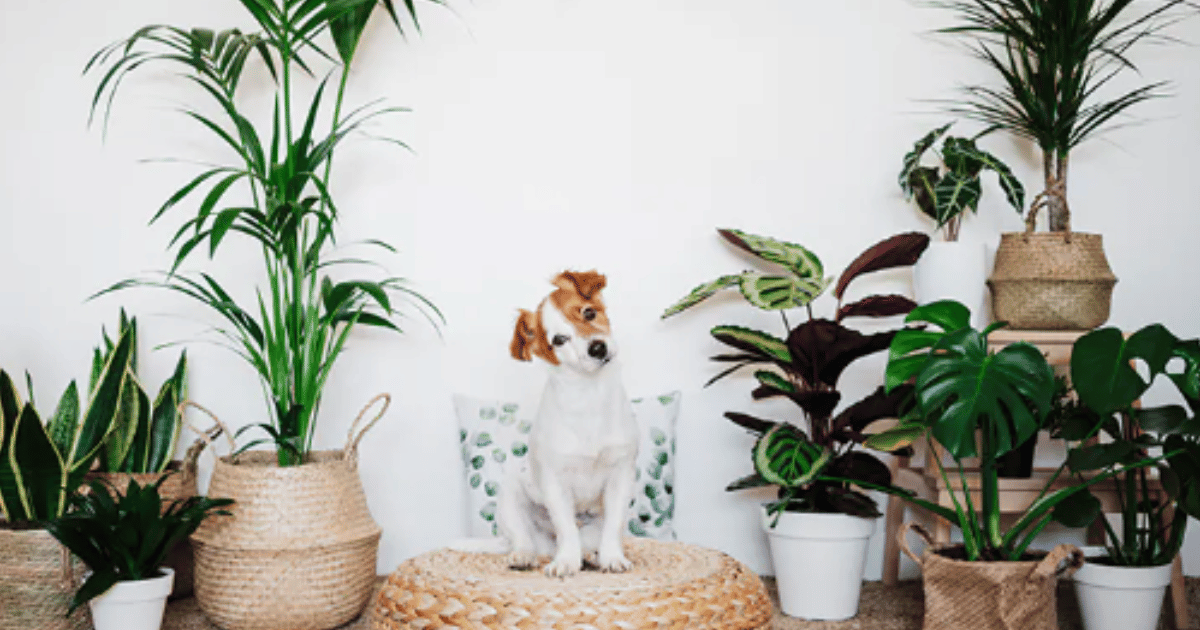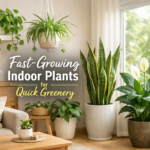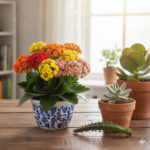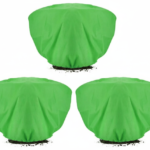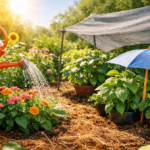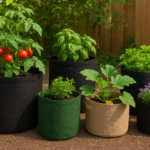Low-light indoor plants are indeed safe for cats, providing a delightful blend of aesthetics and feline-friendly greenery. These carefully chosen plants create a harmonious environment, ensuring the well-being of our curious companions. From the resilient Snake Plant to the elegant Boston Fern, these low-light options thrive indoors without posing any harm to your beloved pets.
The key lies in understanding which plants are cat-approved, fostering a perfect synergy between your love for greenery and your commitment to your feline friends’ safety. Embrace the joy of a cat-safe oasis with these enchanting low-light indoor plants.
The Science Behind Low Light Tolerance

Understanding the science behind the low light tolerance of certain plants sheds light on their ability to thrive in indoor environments with limited sunlight. Here’s a glimpse into the scientific principles that contribute to their adaptability:
Photosynthesis Efficiency:
Low light-tolerant plants have adapted to efficiently capture and utilize available light energy for photosynthesis. They possess specialized structures, such as chloroplasts and chlorophyll, optimized to absorb light even in dim conditions.
Light Spectrum Sensitivity:
These plants can utilize a broader spectrum of light wavelengths, including those found in low-light environments. They have evolved to efficiently convert light energy into chemical energy, essential for growth and survival.
Carbon Dioxide Utilization:
Low-light-tolerant plants have mechanisms to optimize carbon dioxide uptake and utilization during photosynthesis. They can effectively utilize limited carbon dioxide levels, which often accompany reduced light availability.
Water and Nutrient Efficiency:
These plants have developed mechanisms to maintain water and nutrient balance, even under low light conditions. They exhibit reduced transpiration rates and efficient nutrient uptake, ensuring optimal growth despite limited resources.
Cellular Adaptations:
At the cellular level, low light-tolerant plants undergo structural and biochemical adaptations to maximize light capture and utilization. These adaptations may include increased surface area for light absorption, enhanced pigment concentration, and efficient energy conversion pathways.
Resilience to Stress:
Low light-tolerant plants often exhibit resilience to environmental stressors associated with reduced light availability. They have mechanisms to mitigate oxidative stress, maintain cell integrity, and regulate metabolic processes under challenging conditions.
Genetic Variability:
Genetic diversity plays a crucial role in the low light tolerance of plants. Variations in gene expression and regulatory pathways contribute to the adaptation of different species to varying light environments, ensuring survival in diverse ecological niches.
Evolutionary Adaptations:
Over time, natural selection has favoured plants with traits that confer low light tolerance. Evolutionary processes have shaped the genetic makeup of these plants, enabling them to thrive in shaded habitats, such as forest understories or indoor spaces.
Popular Low Light Indoor Plants
Several indoor plants thrive in low light conditions, making them ideal for homes with limited natural light. These plants not only adapt well to indoor environments but also add a touch of greenery to corners that receive minimal sunlight. Some popular choices include the Snake Plant, ZZ Plant, and Peace Lily, known for their low maintenance and aesthetic appeal.
When it comes to low-light indoor plants, there’s a plethora of options that effortlessly thrive in indoor environments, adding a touch of greenery to your living spaces. Here are some popular choices:
Snake Plant (Sansevieria):
Known for its hardiness, the Snake Plant can endure low light conditions, making it an excellent choice for various indoor settings.
ZZ Plant (Zamioculcas zamiifolia):
With glossy, dark green leaves, the ZZ Plant is not only visually appealing but also adapts well to low light, requiring minimal maintenance.
Peace Lily (Spathiphyllum):
Renowned for its elegant white blooms, the Peace Lily can flourish in low light, bringing a touch of serenity to your indoor spaces.
Spider Plant (Chlorophytum comosum):
Recognized for its arching, variegated leaves, the Spider Plant is not only visually attractive but also thrives in indirect sunlight.
Pothos (Epipremnum aureum):
Pothos, with its cascading vines, is a resilient choice that can thrive in low light conditions, making it perfect for hanging baskets or elevated spaces.
Cast Iron Plant (Aspidistra elatior):
As the name suggests, the Cast Iron Plant is robust and can withstand low light, making it a durable choice for indoor greenery.
Are any houseplants safe for cats?

Indeed, many houseplants can coexist safely with cats, provided pet owners make informed choices. Opting for cat-friendly houseplants is crucial to ensure the well-being of our feline friends. Some safe options include the Boston Fern, known for its non-toxicity, and the Areca Palm, adding a tropical touch without posing harm to cats. Spider Plants, with their air-purifying qualities, are another safe choice.
Additionally, the resilient and visually appealing Snake Plant is not only low maintenance but also safe for cats. The Catnip plant, a well-known favourite among felines, can be grown indoors, offering a delightful and safe treat for your cat.
However, it’s equally important to be cautious about specific plants that may be harmful to cats. Toxic varieties include the famous Peace Lily, Aloe Vera, and Philodendron. Pet owners should thoroughly research potential houseplants and cross-reference with pet-safe lists to ensure a hazard-free environment.
By selecting wisely and considering the specific needs of both plants and pets, it’s entirely possible to create an indoor oasis that caters to your love for greenery while keeping your feline companions safe and content. Regular monitoring and prompt action in case of any concerns ensure a harmonious coexistence between houseplants and cats in your home.
What type of plant is not toxic to cats?
While many indoor plants are suitable for low light conditions, not all of them are safe for our feline friends. It’s essential to choose plants that won’t pose a threat to curious cats. Cat-friendly low light plants include the Spider Plant, Boston Fern, and Areca Palm. These plants not only thrive in low light but are also non-toxic to cats, ensuring a pet-safe indoor environment.
Creating a cat-friendly indoor space with low-light plants involves selecting greenery that not only thrives in reduced sunlight but is also safe for our feline companions. Here are some cat-friendly low-light plants that tick both boxes:
Spider Plant (Chlorophytum comosum):
With arching leaves and air-purifying qualities, the Spider Plant is a safe and visually appealing choice for cat owners.
Areca Palm (Dypsis lutescens):
This tropical beauty adds a touch of elegance to your space and is non-toxic to cats, making it a safe alternative for low light areas.
Boston Fern (Nephrolepis exaltata):
Known for its lush and feathery fronds, the Boston Fern is not only aesthetically pleasing but also safe for curious cat exploration.
Parlor Palm (Chamaedorea elegans):
With its compact size and low light tolerance, the Parlor Palm is an excellent choice for cat-friendly indoor greenery.
Calathea (Calathea spp.):
With striking foliage patterns and low light adaptability, Calathea plants are both safe for cats and visually captivating.
Ferns (Various Species):
Many fern varieties, such as the Boston Fern, are safe for cats and thrive in shaded conditions. Their feathery fronds can add a lush, vibrant touch.
Bamboo Palm (Chamaedorea seifrizii):
This palm variety is safe for cats and can tolerate low light, making it suitable for shaded areas while contributing to a tropical aesthetic.
African Violet (Saintpaulia):
If you’re looking for flowering plants, African Violets are safe for cats and can bloom in shaded spaces, bringing colour to your indoor environment.
Peperomia (Peperomia spp.):
With various attractive leaf shapes, Peperomia plants are safe for cats and can thrive in low-light conditions, making them versatile additions to shaded areas.
Choosing cat-friendly, low-light plants ensures a delightful and secure environment for your pets. Always consider the specific needs of your cats and the characteristics of the selected plants to create a space where both can coexist happily. Regularly monitor your plants and observe your cat’s behaviour to ensure a harmonious living space for all.
Benefits of Indoor Plants for Cats

Indoor plants can have a positive impact on the health and well-being of our feline companions. Contrary to common misconceptions, many plants contribute to a cat-friendly environment. The presence of greenery can reduce stress, provide entertainment, and create a more stimulating atmosphere for cats. Pet owners need to recognize the potential benefits of incorporating indoor plants into their homes.
Introducing indoor plants into your living space can bring a myriad of benefits for your feline companions, contributing to their overall well-being and creating a harmonious environment. Here are some key advantages:
- Stress Reduction: Indoor plants have been shown to reduce stress levels in both humans and animals. The presence of greenery can create a calming atmosphere, helping to alleviate stress and anxiety in cats.
- Environmental Enrichment: Plants provide a source of environmental enrichment for cats. The different textures, scents, and visual stimuli of plants can stimulate a cat’s senses, preventing boredom and promoting mental engagement.
- Improved Air Quality: Many indoor plants act as natural air purifiers, removing pollutants and enhancing air quality. Cleaner air contributes to a healthier living space for both cats and their owners.
- Behavioural Stimulation: Cats are natural hunters, and the presence of plants can offer a safe outlet for their hunting instincts. Watching leaves rustle or chasing shadows created by plants can provide valuable physical and mental stimulation.
- Temperature and Humidity Regulation: Certain plants contribute to maintaining optimal temperature and humidity levels indoors. This can be especially beneficial for cats, as it helps create a comfortable and pleasant environment.
- Aesthetic Appeal: Indoor plants add visual interest to your home, creating a more inviting and aesthetically pleasing space. Cats, known for their curiosity, may enjoy exploring and interacting with the greenery.
- Oxygen Production: Through photosynthesis, plants release oxygen into the air. This natural process can enhance the air quality in your home, providing your cat with a healthier atmosphere to thrive in.
- Resting and Hiding Spaces: Larger plants with dense foliage can serve as cosy resting spots or hiding places for cats. This mimics their natural behaviour of seeking refuge in foliage, providing them with a sense of security.
Caring for Low Light Indoor Plants
Proper care is crucial to ensure the well-being of both plants and pets. While low-light indoor plants are generally hardy, they still require attention and care. Regular watering, appropriate soil, and occasional fertilization contribute to the overall health of indoor plants. Additionally, positioning plants in spots that receive indirect sunlight is essential for their growth.
Caring for low-light indoor plants involves specific considerations to ensure their health and vitality. Here are essential points to keep in mind:
- Light Requirements:
- Understand the specific low-light conditions your plants need. Position them in areas with indirect sunlight or shaded corners.
- Watering:
- Low-light plants generally require less water. Allow the soil to dry out between watering to prevent overwatering, which can lead to root rot.
- Soil Quality:
- Use well-draining soil to prevent waterlogging. A mix designed for indoor plants with good aeration is ideal.
- Humidity Levels:
- Low-light plants often thrive in higher humidity. Mist the leaves occasionally or place a tray of water near the plants to create a more humid environment.
- Temperature Considerations:
- Keep the indoor temperature within the recommended range for each plant species. Most low-light plants tolerate average room temperatures.
- Fertilization:
- Feed your plants with a balanced liquid fertilizer during the growing season (spring and summer). However, low-light plants generally require less frequent fertilization.
- Pruning and Maintenance:
- Regularly remove yellow or dead leaves to encourage new growth. Prune to maintain the desired shape and size, promoting overall plant health.
- Pest Control:
- Keep an eye out for pests like spider mites or aphids. If detected, treat them promptly with natural or chemical solutions suitable for indoor plants.
- Rotation:
- Rotate your plants occasionally to ensure even exposure to light. This helps prevent uneven growth and encourages a balanced appearance.
- Observation:
- Pay attention to your plants. Observe their response to care routines and adjust watering or other practices accordingly. Healthy plants exhibit vibrant foliage and steady growth.
- Avoid Drafts:
- Protect low-light plants from drafts, as sudden temperature changes can stress them. Keep them away from heaters, air conditioners, or windows during extreme weather.
- Repotting:
- Report your low-light plants when they outgrow their containers or show signs of root-bound stress. Use fresh soil and a slightly larger pot.
By addressing these key points, you can provide optimal care for your low-light indoor plants, ensuring they thrive in conditions that might be challenging for other varieties. Regular attention and a balanced approach to care contribute to the longevity and beauty of your indoor green companions.
Design Ideas for Incorporating Plants
Integrating indoor plants into home decor is an art in itself. From hanging planters to stylish pots, various design ideas cater to both plant aesthetics and cat safety. Elevated shelves, cat-friendly planters, and designated plant corners are creative ways to enhance your home with greenery while ensuring a safe space for your curious feline friends.
Integrating indoor plants into your home decor can be a creative and rewarding endeavour. Here are design ideas for incorporating plants that seamlessly blend aesthetics with the well-being of both your plants and your living space:
- Elevated Shelves and Ledges:
- Install floating shelves or ledges at different heights on your walls. Place potted plants on these elevated surfaces to create a visually appealing display. This not only adds greenery but also utilizes vertical space.
- Hanging Planters:
- Suspend plants in decorative hanging planters from the ceiling. This not only saves floor space but also introduces an element of sophistication and adds a dynamic visual dimension to your home.
- Botanical Corners:
- Dedicate specific corners in your rooms to create mini indoor gardens. Arrange a variety of plants with different heights and textures to craft a lush and inviting green oasis within your living space.
- Tiered Plant Stands:
- Use tiered plant stands to showcase multiple plants in a single space. This creates a layered and organized look, allowing each plant to shine while maintaining a cohesive design.
- Window Sills and Ledges:
- Utilize window sills and ledges to display plants that thrive in natural light. This not only enhances the aesthetics but also maximizes the exposure of your plants to sunlight.
- Plant Hangers and Macramé:
- Incorporate trendy macramé plant hangers for a bohemian touch. Hang them near windows, in corners, or above furniture to infuse a sense of style while providing an ideal environment for your plants.
- Terrariums and Glass Containers:
- Create miniature ecosystems by placing small plants in glass terrariums or containers. These compact green spaces add intrigue and can be placed on tables, countertops, or shelving units.
- Botanical Wall Art:
- Integrate framed botanical prints or plant-themed artwork into your decor. This adds a subtle yet effective touch, merging the beauty of art with the allure of living plants.
- Floating Plant Shelves:
- Install floating shelves specifically designed for plants. These shelves allow you to create plant arrangements of different sizes and types, turning your walls into a living gallery.
- Plant Stands with Drawers:
- Combine functionality with aesthetics by using plant stands that incorporate drawers or storage compartments. This provides a practical solution for keeping gardening tools or extra plant accessories within easy reach.
- Corner Planters and Plant Stools:
- Place plants in stylish corner planters or utilize plant stools. These unique elements not only showcase your greenery but also contribute to the overall design aesthetic of the room.
- Cascading Plants on Furniture:
- Allow trailing or cascading plants to spill over the edges of furniture, such as bookshelves or side tables. This adds a whimsical touch and softens the lines of the furniture.
Common Myths about Indoor Plants and Pets
Misconceptions about the toxicity of indoor plants can deter pet owners from incorporating greenery into their homes. It’s essential to debunk common myths and clarify the facts surrounding specific plants. Being well-informed empowers pet owners to make educated decisions, ensuring a safe and enriching environment for both plants and pets.
DIY Cat-Safe Planters
For the crafty and hands-on pet owners, creating DIY cat-safe planters adds a personal touch to plant ownership. Incorporating safety features such as elevated platforms and protective barriers ensures that cats can explore without causing harm to themselves or the plants. This hands-on approach fosters a sense of pride and responsibility in pet owners.
Choosing the Right Spot for Your Plants
Strategically placing indoor plants involves considering both aesthetics and cat behaviour. Understanding your cat’s preferences and tendencies helps in selecting the optimal locations for your plants. Creating cosy corners, providing access to sunlight, and incorporating plants into existing furniture arrangements contribute to a harmonious living space for both plants and pets.
Alternatives for Non-Cat-Friendly Plants
For plant enthusiasts who have fallen in love with non-cat-friendly plants, some alternatives mimic the appearance of potentially harmful varieties. Offering a diverse range of choices ensures that pet owners can enjoy a variety of indoor greenery without compromising the safety of their feline friends.
Cat Behavior and Plant Interaction
Understanding cat behaviour and its interaction with indoor plants is crucial for fostering a harmonious environment where both can coexist. Here are critical insights into cat behaviour and how they interact with plants:
- Curiosity and Exploration:
- Cats are naturally curious creatures. They may investigate and explore indoor plants by sniffing, pawing, or even nibbling on leaves. This behaviour is part of their instinctive exploration.
- Nibbling on Plants:
- Some cats may chew on plants out of curiosity or boredom. While this behaviour is generally harmless, it’s essential to ensure that the plants are non-toxic and safe for consumption.
- Grass-Chewing Instinct:
- Cats have an instinct to chew on grass, which can aid in digestion and help them regurgitate hairballs. Providing cat grass or safe plants for them to chew on can satisfy this natural behaviour.
- Hiding and Resting Spots:
- Indoor plants with dense foliage often become attractive hiding spots for cats. They may find comfort and security nestled among the leaves, mimicking their natural inclination for cosy hideaways.
- Playful Interaction:
- Cats may view plants as interactive toys. Hanging vines, swaying leaves, or dangling branches can trigger playful behaviour, providing mental and physical stimulation.
- Scent Marking:
- Cats mark their territory by rubbing their scent glands on surfaces. Indoor plants become part of their territory, and cats may exhibit head-bumping or rubbing against plant leaves as a form of scent marking.
- Preventing Boredom:
- Indoor plants can serve as enrichment tools, preventing boredom in cats. Engaging with plants, whether through play or exploration, offers mental stimulation, especially in multi-cat households.
- Understanding Toxicity:
- Awareness of the toxicity of certain plants is crucial. While many indoor plants are safe for cats, some can be harmful. Avoiding toxic varieties ensures the well-being of your feline friends.
- Providing Alternatives:
- Offering cat-friendly alternatives, such as cat grass or safe herbs, redirects their attention from potentially harmful plants. This ensures that cats can fulfil their natural behaviours in a safe and controlled manner.
- Observation and Adaptation:
- Regularly observe how your cat interacts with indoor plants. Adapt the environment based on their preferences and behaviours to create a safe and enriching space.
Testimonials from Veterinarians
To address concerns about the safety of low-light indoor plants, we consulted with veterinarians who specialize in pet care. Their expert opinions reassure pet owners about the suitability of specific plants and offer guidance on creating a balanced and safe environment for both plants and pets.
Conclusion
In conclusion, integrating low-light indoor plants into your home can be a rewarding experience, enhancing both aesthetics and the well-being of your cats. By choosing cat-friendly plants, understanding their care requirements, and incorporating creative design ideas, you can create a space where plants and pets coexist harmoniously. Remember, informed decision-making is vital to ensuring a safe and enjoyable environment for all.
FAQs
Are all low-light indoor plants safe for cats?
While many low-light indoor plants are safe for cats, it’s essential to research and select specifically cat-friendly varieties to avoid potential toxicity.
How can I prevent my cat from damaging indoor plants?
Providing alternative outlets for your cat’s natural behaviours, such as scratching posts and interactive toys, can help redirect their attention away from plants.
What are some signs that a plant might be harmful to my cat?
Signs of plant toxicity in cats include vomiting, lethargy, and changes in behaviour. If you observe these signs, consult with a veterinarian promptly.
Can I create a cat-friendly space with both natural and artificial plants?
Yes, incorporating a mix of natural and artificial plants can provide a safe and visually appealing environment for your cat.
Do indoor plants attract insects that may harm my cat?
While some plants may attract insects, proper care and regular monitoring can help prevent infestations and ensure the safety of your cat.

